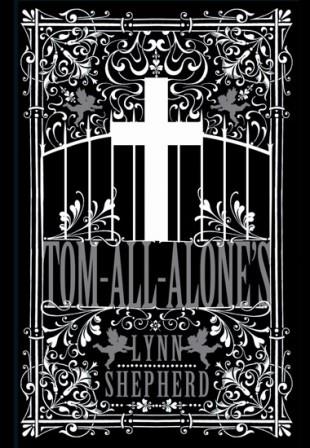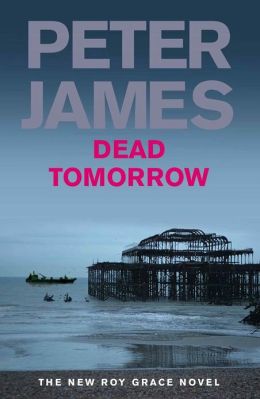
Self-editing is definitely the most difficult kind of editing.
Recently I reviewed Lynn Shepherd’s excellent novel ‘Tom-All-Alone’s’, a literary murder mystery with its roots in Charles Dickens’ ‘Bleak House’. I had a lot more to say about it than could comfortably fit in one post, so below are some more thoughts about the narrative style and characterisation. Hopefully this will be the end of my ramblings be of some interest!
‘We have a way to go yet and the day is darkening.’
Most of the book is narrated in an omniscient third person, allowing the reader to be given slightly more information than the characters at key points. However, there are two key ways Shepherd deviates from this.
‘Keep your pocket-book close as we go – this part of town is as silent with thieves as it is strident with drunks.’
Shepherd makes frequent use of second person narration throughout the book. From the beginning I found it odd to read about ‘us’, ‘we’ and ‘you’, as in ‘our young man’, ‘we might think’ and ‘you might say’, but the oddity was heightened when I was informed that ‘you are standing’ and ‘we can see’. These are not simply turns of phrase: Shepherd genuinely tries to evoke a sense of place by insisting on the reader’s physical presence.
Personally, I found this disconcerting and therefore ineffective. Each insistent ‘you’ removed me from the story and reminded me that I was a reader located outside these events. However, it seems likely that these passages, which tend to foreshadow later events and reveal information hidden from Charles, are designed to draw the reader in by creating a confidential tone and other readers may feel very differently about this device. Personally I began to find it rather annoying and found myself rolling my eyes whenever the narrative voice took this kind of diversion. (Yes, I am aware that Dickens himself sometimes broke the fourth wall, most notably in ‘Bleak House’ following the death of the crossing sweeper, Jo, but when he did he seemed motivated by a pure kind of fury, whereas this narrator seems to just enjoy being privy to little-known information and therefore seems meaner.)
‘Sometimes I wondered whether I was not becoming quite devious.’
A few chapters are narrated in the first person by a young girl called Hester. Unfortunately, Hester (like Esther in the original novel) is rather an irritating narrator. She is insistent on her lack of self-importance and her virtue but is simultaneously obsessed by the minutiae of her existence – perhaps unsurprisingly, given how cloistered it is. Her narration felt like an irritating diversion at first, especially as I could not understand why Shepherd had stopped using characters taken directly from the pages of ‘Bleak House’ and was instead creating her own very similar characters in comparable circumstances. Perhaps more problematically, Hester is as boring as Esther was and I felt that Shepherd had strangely refracted a flaw from the original text.
Should I have seen the twist coming? Probably.
Gradually, as I paid more attention to the things Hester was saying, the oddities intrigued me. Why was the beautiful Clara shut away? What illness did Hester suffer? Why are the girls wards of Jarvis? I have to admit I allowed my initial impatience to rush me through these chapters, which seemed to be completely unconnected to the main plot, and so I didn’t make the connections a more thoughtful approach would’ve allowed. I’m not the only reader to feel this way about Hester, but perhaps this is a trick of Shepherd’s.
My initial dismissal of these chapters meant that when the connection between the two worlds became clear – and, of course, as this story has its roots in Dickens, everything is connected – I had to re-read Hester’s chapters so I could properly appreciate the situation of all the characters at Solitary House. I still think Hester is irritating, but she turns out to be rather unreliable and her story is at the heart of the narrative. Should I have seen the twist coming? Probably. I was thinking along the right lines, but the story is so different from Dickens’ work that it was hard to believe what I suspected could be correct. I wonder whether readers who are not familiar with ‘Bleak House’ might be better able to recognise Hester’s position.
Solitary House
Hester’s narrative is where the world of ‘Bleak House’ is paralleled rather than entered and I found it interesting to note the similarities and differences between characters and their situations in the original text and this one. Clearly, Shepherd feels Dickens’ works were rather too saccharine. Here’s what would REALLY happen to these individuals in this place and time, she says, and it isn’t pretty. In this book, there’s no John Jarndyce to play the pleasant rich aristocrat and rescue everybody. Instead, it’s up to Charles Maddox – and Inspector Bucket.
Here’s what would REALLY happen to these individuals in this place and time, Shepherd says, and it isn’t pretty.
It’s a delight to meet so many characters from ‘Bleak House’ along the way and I enjoyed a number of ‘aha! That’ll be x’ moments as I read. I think this would appeal to any fan of the original book. However, what I found extremely odd were the references to Dickens himself and his movements through London. It felt quite bizarre to read about Dickens’ characters in one paragraph and about Dickens himself in the next as if the two were peacefully co-existing within the pages of the novel. This kind of meta fiction can work (it works delightfully in Jasper Fforde’s ‘The Eyre Affair’) but I didn’t feel it worked here and was glad that the references to Dickens himself petered out as the novel got underway.
Final, final thoughts
In ‘Bleak House’ London itself is a character and Shepherd has clearly tried to mimic this element of the original text. She creates a strong sense of place through her descriptions of chaotic London scenes and I enjoyed this aspect of the book.
Did I enjoy this? Yes. If you fancy reading it, read carefully; there are many connections bubbling away beneath the surface in a novel that’s much darker than its inspiration.

